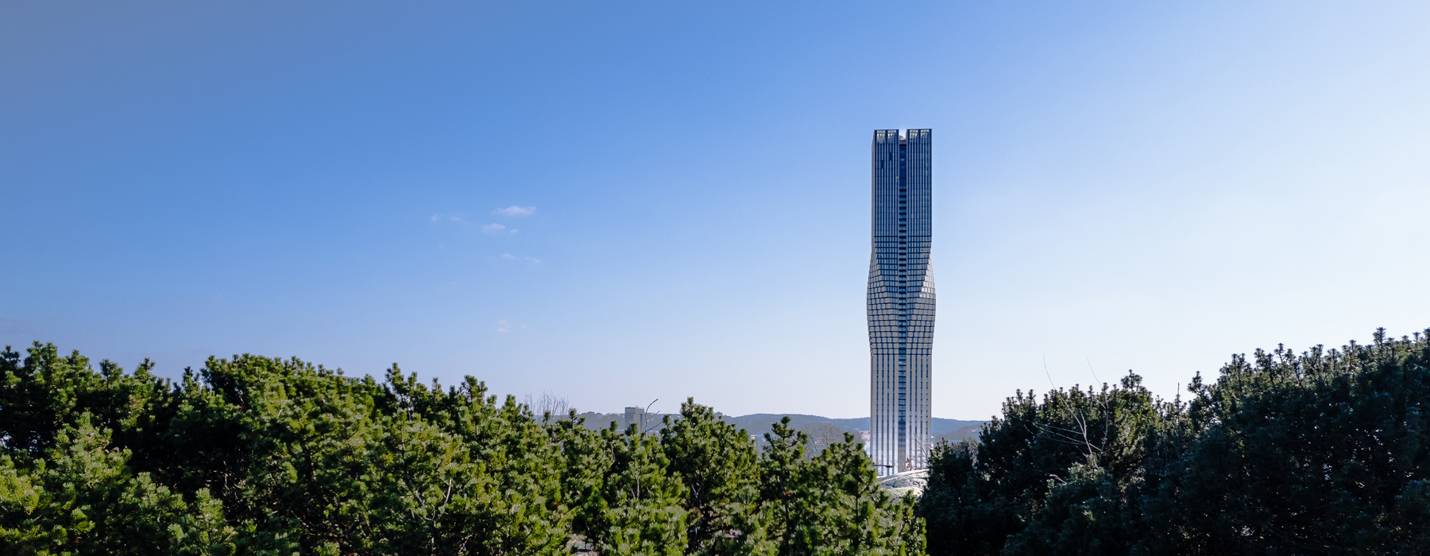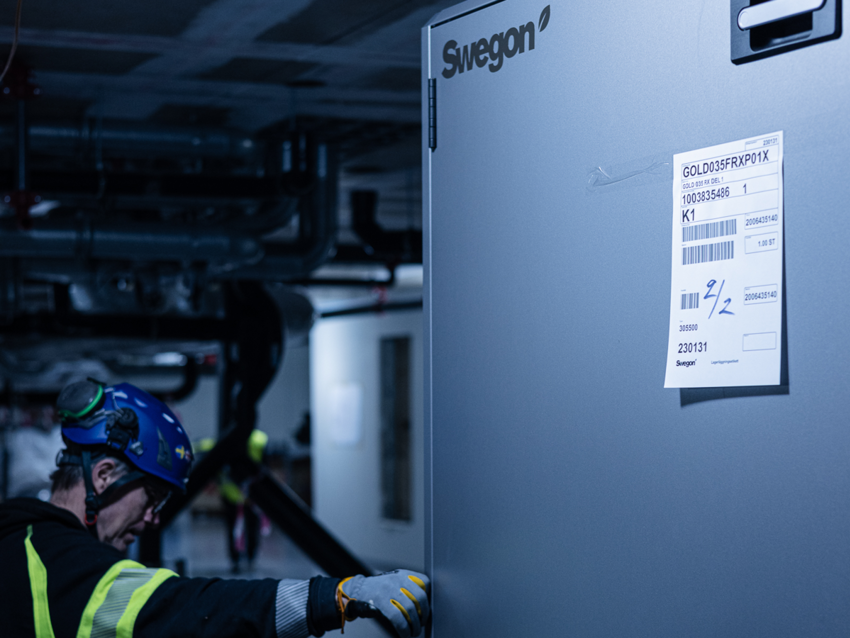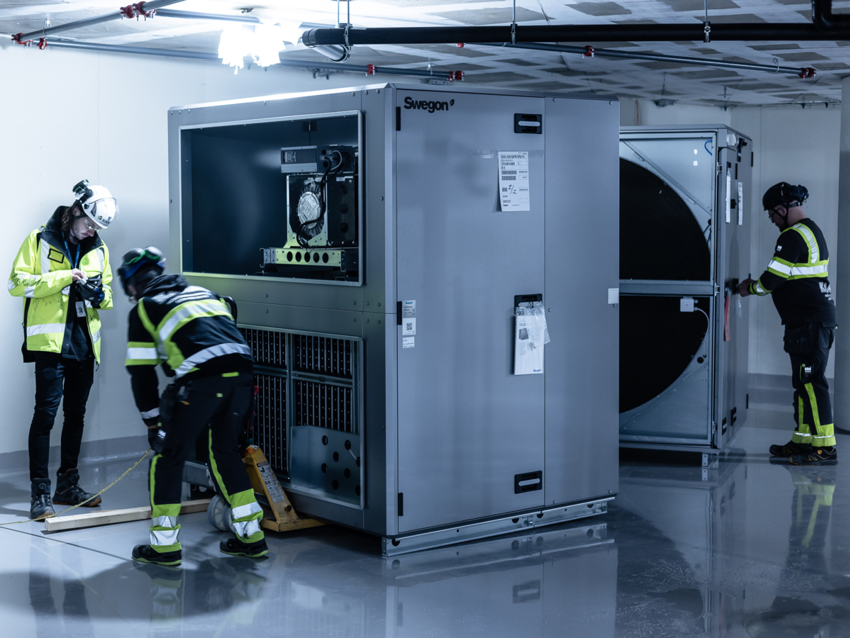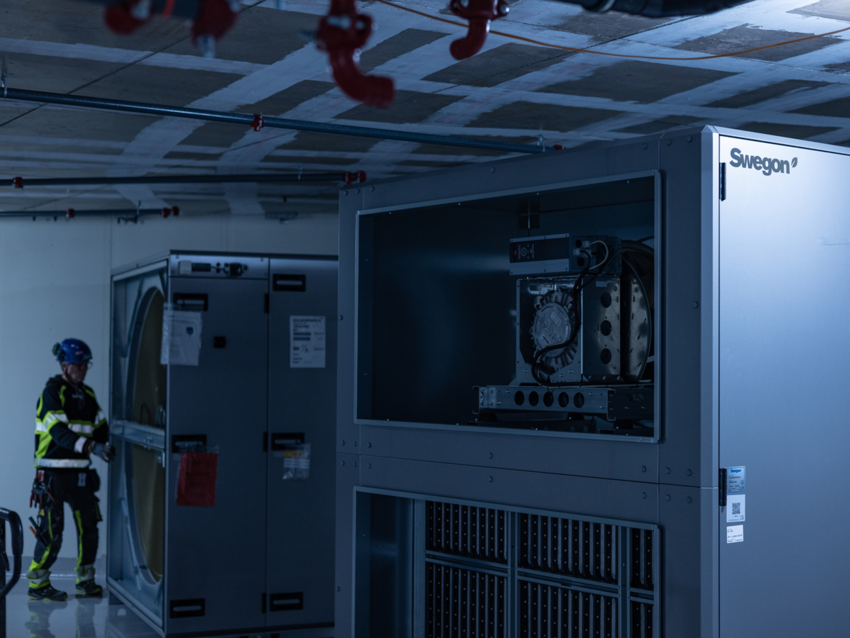
Delivering on top - a decentralised solution for 245 meters
Karlatornet in Gothenburg, Sweden
As one may expect from the construciton project of the tallest residential building in the European Union, the ambitions for Karlatornet were sky high. The view over the sea and the city of Gothenburg was going to be absolutely fantastic and the indoor climate naturally had to match it. However, a 245 meter tall building presents some unusual "behind-the-scenes" challenges, particularly in terms of space utilisation and logistics. The chosen products and the solution as whole makes total sense for the building - a top job, simply put.
This is how it all began
Lindholmen is located north of Gothenburg city centre and was once known for its many shipyards and industries. The area transformed during the mid-1990s when schools emerged, tech-businesses moved in and a science park was built. A long lasting construction process followed with residential buildings, hotels and other amenities being raised.
In the early 2000s, the Gothenburg based real estate company, Serneke, acquired a three-acre expanse and planned it as “Karlastaden”. Their most known and ambitious project in the area came to be Karlatornet, a 74 story, or 245 m tall, building rising to the sky well above all other structures at Lindholmen, and in most of Europe for that matter. Karlatornet is built primarily as a residential building with more than 600 apartments, but the skyscraper also house restaurants, convenient stores, offices and a top-floor visitor centre. An incredible addition to the Gothenburg skyline!
A decentralised solution for ventilation
As said, Karlastaden took form already in the early 2000s. More than ten years later, the construction industry understood that the many years of meticulous project formation had come to a point where construction planning was on the table. A consultancy firm in the building industry in Gothenburg prepared a technical blueprint for a system solution for ventilation which accompany the project for many years to come.
At Swegon we formed a team of highly knowledgeable and experienced colleagues who collaborated to serve the project with answers and recommendations to potential indoor climate solutions. The ventilation requirements set for the building allowed us to eventually present a decentralised solution where air handling units (AHUs) were strategically positioned on every fifth floor throughout the entire building. A solution the consultancy firm was keen on, and which ended up being the final solution for the now finished skyscraper.
An amazing building
Lets go back to the fact that Karlatornet is 74 stories tall, rising 245 meters above the ground – perhaps not intimidating in a global perspective, but an incredible addition to the Gothenburg skyline!
Hear our expert Lars Svensson, Technical advisor, Swegon Sverige AB, share his thoughts about our truly exciting work at Karlatornet. Hear his comments about the challenges in this project and listen to his circumspective thoughts about our top delivery.
This is not only a spectacular building
An apartment is not just a definition of a place where someone lives, it is a home. It is a place for comfort, rest and recuperation as well as for sleep. Good air quality may often be seen as key for performing at work or in school, but good air quality is just as important for recovery, for processing thoughts from a long day of meetings or studies and for the well needed sleep. The 73-story Karlatornet will be the home to nearly 2 000 persons,
quite some hours of sleep to care for.

Choosing a supplier
The contractor, Bravida, was entrusted the heating, ventilation and air conditioning (HVAC) project at Karlatornet. They, together with the consultancy firm COWI, specified air handling units (AHUs) with integrated control systems for a decentralised solution. A quest that we understood could suit us very well at Swegon.
We have worked many projects over several years together with Bravida, and the fact that they were familiar with our expertise as well as with the helpfulness of our technicians, might have assigned us some extra reliability and credibility when Bravida made their choice of supplier for Karlatornet.
Why Swegon?
Air handling units for a very special project
The air handling units for this project were fairly ordinary despite the extraordinary characteristics of the building. Our GOLD RX air handlers are manufactured with built in controls as standard, and our regular sizes met the set requirements for the indoor climate in Karlatornet. The rotors are epoxy treated to stand the salty and humid outside air on the west coast of Sweden.
The apartments in Karlatornet are divided into four housing cooperatives and they all decided on the same ventilation solution from us at Swegon. Hence, a total of 19 GOLD air handling units of various sizes from the smallest 008 were provided to the project. In addition, two bigger units were needed to serve a few larger apartments and the visitor areas on the top floors. These had to be custom-made because the large rotor had to be delivered in pieces. The construction elevator was the only option to get people and items up and inside the building, and the standard rotor was far too big to fit the elevator cars.
Read more about epoxy treatment of rotors
To get more information about GOLD
Why a decentralised solution?
INTRODUCTION
The size of duct work may affect rent
Air handling units take up floor space and affect a building construction no matter where they are placed. If planned for the basement, separate underground floors might have to be constructed, or if planned for the rooftop, the entire construction has to be built to carry the weight – a cost during the building process in any way.
If instead planned for dedicated machine floors inside the building, potential loss of rentable space is the apparent cost. The same goes for a decentralised solution where the units are spread out on different floors throughout a building. However, if looking beyond the units themselves, a decentralised solution require much smaller duct work which can allow for more space to be used for rent. Yes, it is most likely rentable space in the centre of a building, but large sized bathrooms, spacious walk-in closets etc. are for sure highly attractive square meters as well.



